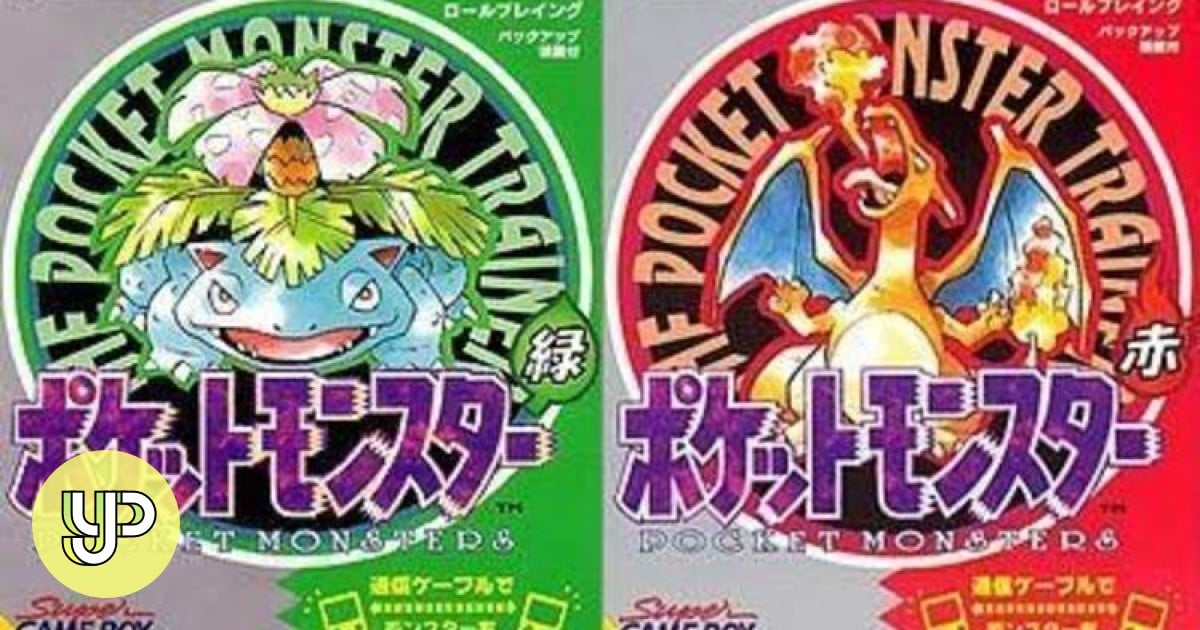The Evolution of Pokémon: From Game Boy to Global Empire
Table Of Contents
Pocket Monsters & Pop Culture Power Plays
It started with a Game Boy and a dream. What began as a humble role-playing game in 1996, inspired by one man's childhood fascination with bug collecting, has since evolved into a multibillion-dollar franchise that transcends age, culture, and geography.
With each new iteration, from Pokémon GO to live-action films, the brand masterfully adapts to shifting trends while retaining its nostalgic charm. In this article, Hollywood Branded explores how Pokémon has risen to fame and sustained its iconic popularity through strategic brand evolution and fan engagement.
-2.png?width=1200&height=675&name=top%20white%20rectangle%20%20with%20black%20link%20(4)-2.png)
How It All Began
In 1996, Pokémon launched in Japan as a pair of Game Boy games: Pokémon Red and Green. Created by Satoshi Tajiri and developed by Game Freak, the idea was inspired by Tajiri’s childhood love of insect collecting. What began as a simple monster-battling RPG snowballed into a multi-platform powerhouse, which spawned a trading card game, anime, toys, films, and more.
Nintendo, Game Freak, and Creatures Inc. co-own the brand under The Pokémon Company, and their early strategic alignment across media types gave Pokémon an edge. The synergy between the game, TV series, and trading cards created a loop of engagement that fed its exponential rise.

Photo Credit: South China Morning Post
A Global Craze Cemented By Nostalgia & Reinvention
By the late '90s and early 2000s, Pokémon had become a full-blown cultural phenomenon. The animated series aired globally, kids traded cards on school playgrounds, and Pokémon: The First Movie made over $160 million worldwide. While many trends fade, Pokémon continued to thrive by leaning into two key strategies: nostalgia and reinvention.
When Pokémon Go launched in 2016, it reignited interest from lapsed fans while engaging a new generation. The augmented reality mobile game earned over $200 million in its first month and generated more than $6 billion in revenue by 2022. The blend of real-world interaction, gamified fitness, and beloved characters gave the franchise a fresh, modern edge. Beyond mobile gaming, The Pokémon Company continues to innovate with new game releases every few years, like Pokémon Legends: Arceus, which reimagined the traditional gameplay model with an open-world twist.
Photo Credit: Pokemon GO
Strategic Partnerships & Brand Collaborations
Pokémon’s ability to evolve isn’t just tied to gameplay but also visibility through smart collaborations. Over the years, the brand has teamed up with fashion lines like Levi’s and Converse, introduced a Pikachu-themed Oreo collection, and worked with McDonald’s for Happy Meal toy promotions. These partnerships help Pokémon stay relevant across lifestyle and pop culture touchpoints.
Even more impressive, many collaborations are timed with key franchise milestones, such as Pokémon’s 25th anniversary in 2021. The celebration included music drops from Katy Perry, Post Malone, and J Balvin, turning nostalgia into a global party. By aligning with both nostalgic brands and Gen Z influencers, Pokémon has managed to stay fresh in a hyper-competitive IP landscape, further proving that brand storytelling and cultural fluency are essential for long-term success.

Photo Credit: Austin American Statesman
Cross-Generational Fan Base & Community Engagement

Photo Credit: NPR
What truly makes Pokémon a powerhouse is its ability to connect with fans across age groups. For Millennials and Gen Xers, Pokémon is a nostalgic trip down memory lane. For Gen Z and Alpha, it's a living, breathing world filled with colorful characters, social gameplay, and endless YouTube content. This cross-generational appeal ensures that every new product release has a built-in audience, both new and returning.
The Pokémon World Championships, held annually, attract top-tier players from around the world, solidifying the franchise’s presence in the competitive esports space. On social media, creators post unboxing videos, theory breakdowns, and cosplay tributes, which organically fuel fan excitement. The fandom is self-sustaining: Pokémon gives fans the tools to create, and in return, fans amplify the brand. This kind of two-way interaction is something few legacy franchises have mastered.
The Power Of Transmedia Storytelling

Photo Credit: Polygon
Pokémon isn’t just a brand, it’s an entire universe. From the mainline games to spin-off series, movies, trading cards, anime episodes, and mobile apps, the IP has created a seamless web of interconnected narratives and touchpoints. This is the essence of transmedia storytelling, a strategy that allows Pokémon to tell compelling stories across multiple formats while keeping fans engaged on all fronts.
Each new generation of games introduces new regions, characters, and species that deepen the lore and add excitement for both new and seasoned players. With more than 1,000 unique Pokémon now in the franchise, there's always something new to explore. Even the anime series evolves with time. When Ash Ketchum recently retired as the main protagonist after 25 years, it marked the end of an era and ushered in a new one, again capturing fan interest worldwide.
What Hollywood Can Learn From Pokémon
Pokémon has become one of the most successful entertainment franchises of all time, with total revenues surpassing $100 billion, beating out Star Wars, Marvel, and Hello Kitty. But this success wasn’t accidental. It was the result of a careful blend of brand consistency, platform diversification, fan-centric engagement, and cultural timing. The Pokémon playbook shows that longevity comes not just from great content, but from building an ecosystem that evolves with its audience.
For studios, marketers, and IP developers, Pokémon is a blueprint for how to scale a brand across decades, platforms, and generations. Whether it's strategic collaborations, transmedia innovation, or community-first marketing, there’s a lot to be learned from this little monster-catching franchise that turned the world upside down.
Eager To Learn More?
Interested in learning more about the world of pop culture? Dive into these 5 blogs below, written by your very own HB team.
- Damson Idris: Hollywood’s Next Leading Man and Brand Powerhouse
- Why Brands Couldn't Resist the Allure of Netflix's Squid Game
- Brad Pitt's F1 Movie Shifts Gears in Hollywood and Racing
- How Gen Z Turned Language Into Its Own Dialect
- Why Celebrities Are Launching Phone Services
Want to stay in the know with all things pop culture? Look no further than our Hot in Hollywood newsletter! Each week, we compile a list of the most talked-about moments in the entertainment industry, all for you to enjoy!







